How to Prepare Your Garden for a Hot Summer: 10 Essential Tips
Spring may be beautiful, but in a hot climate, it’s also the warning sign that extreme heat is on the way. If you garden in a place with long, hot summers, now is the time to get your garden ready.
The steps you take before the heat arrives will make a big difference in how well your vegetables, herbs, and flowers handle summer stress. In this post, I’m sharing 10 smart ways to prepare your garden for summer in a hot climate—so you can protect your plants, conserve water, and keep gardening all season long.
1. Eliminate small containers
Small containers work well during the cooler months, but once temperatures rise, they become more of a liability than an asset. They heat up and dry out quickly, making it difficult to keep anything healthy and hydrated.
As summer approaches, it’s best to put small containers away until fall. Empty the soil and use it as mulch in the garden or add it to your compost pile.
If you still want to grow in containers during the summer, opt for large containers that hold at least 10 gallons of soil. Bigger containers retain moisture better and help buffer plant roots from the intense heat.
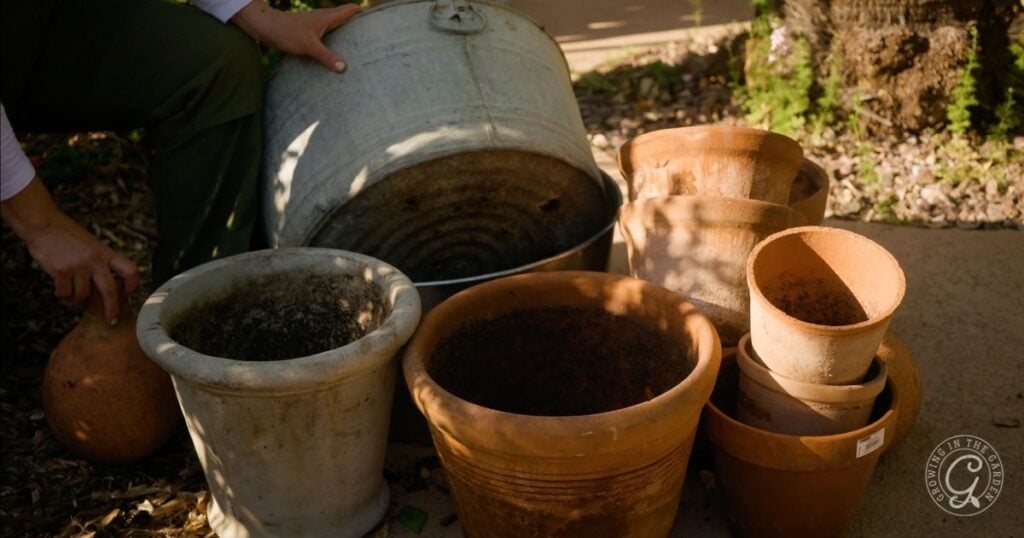
If you’re using containers in a hot climate, Elevated Garden Bed Tips for Hot Climates shares strategies to help your garden thrive when temperatures soar.
For more information about container gardening, read this blog post, “Container Gardening for Beginners: 10 Steps for Success“.
2. Use ollas (oyas) in containers
If you’re gardening in large containers during the summer, adding an olla (also called an oya) is one of the best ways to keep plants hydrated in the heat.
Ollas are unglazed terra cotta pots buried in the soil near your plants. As the soil dries out, water slowly seeps through the porous walls of the olla, delivering moisture directly to the roots, right where it’s needed.
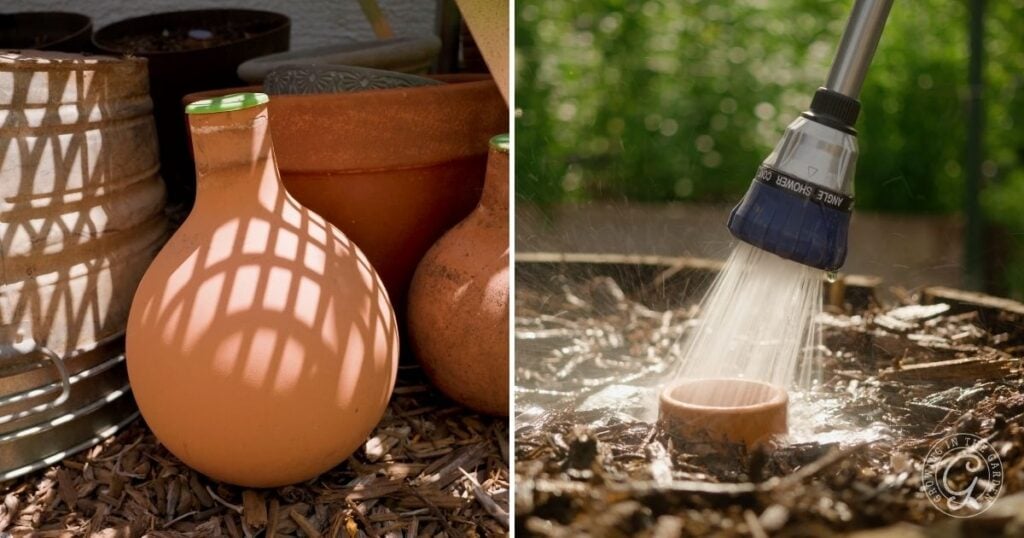
This slow-release watering method helps containers stay evenly moist and reduces the stress of frequent watering. Just refill the olla as needed, and let it do the work. I use ollas from Growoya.
For more information about adding ollas to your garden, read this blog post, “The Best Way to Water Outdoor Potted Plants“.
3. Inspect the watering and irrigation system
During the cooler months, a broken emitter may not be a big deal, but during the summer, the intense heat of hot-summer climates means that a plant could die before you realize it needs water. So check all parts of your watering and irrigation system BEFORE it gets hot.
I use the watering grids from Garden in Minutes in all of my raised beds. Use code Angela10 to save $10 off orders of $100 or more, or use ANGELA to save 7% on any size order.

- Run the drip irrigation system and inspect the emitters on your landscape plants.
- Check the watering system in each bed to ensure adequate water pressure and coverage.
- Add additional emitters as needed.
- Inspect timers.
- Check and replace batteries in timers.
- Inspect fittings on hoses and replace o-rings as needed to fix leaks.
For more information about watering your garden, read this blog post, “The Best Way to Water Raised Beds“.
4. Mulch, mulch, mulch!
Mulch is a hot summer gardener’s best friend. The sun in hot-summer climates is hard on plants and the soil. However, there are many advantages to adding mulch:
- Mulch shades the soil from the sun’s direct rays causing less temperature variation.
- A thick layer of mulch means that less moisture is lost through evaporation. You can then water less frequently, saving water, money, and time!
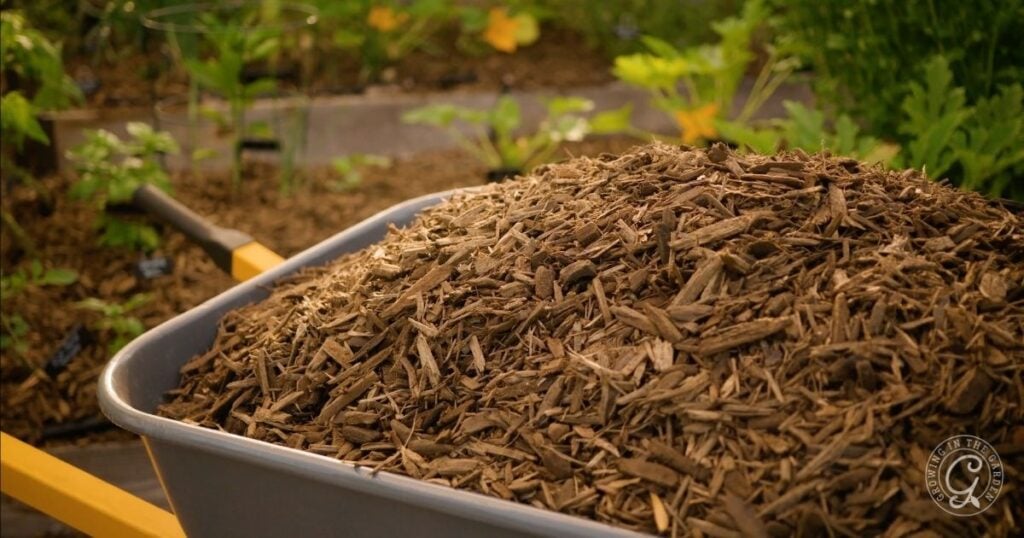
For more information about using mulch, read this blog post, “Mulching Your Garden: What to Use and How to Use it”.
5. Evaluate cool-season plants in your hot-climate summer garden
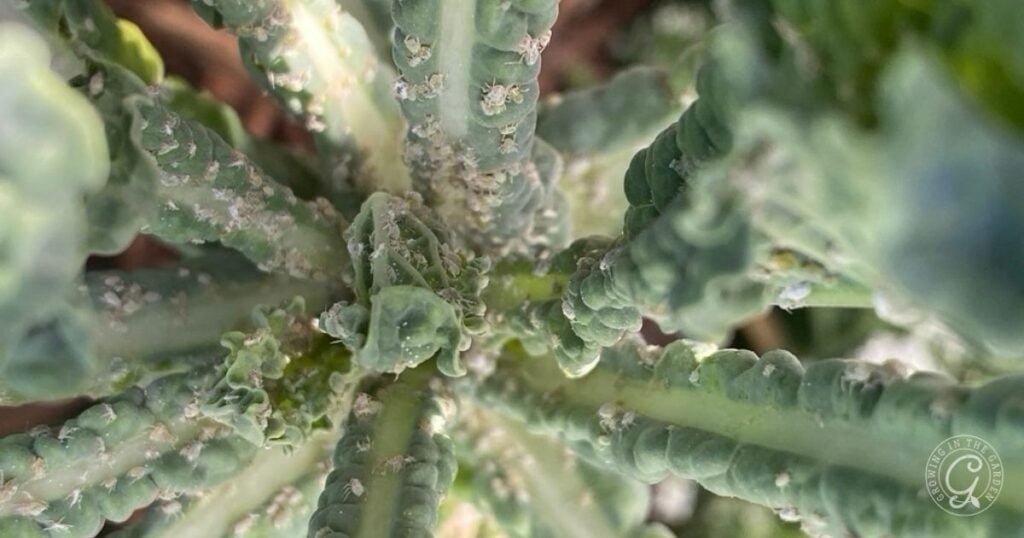
As summer approaches, most cool-season vegetables won’t survive the heat, especially in hot-summer climates like the low desert. If a plant isn’t going to produce before the temperatures rise, it’s usually best to remove it. Stressed, declining plants can attract pests and create more problems in the garden.
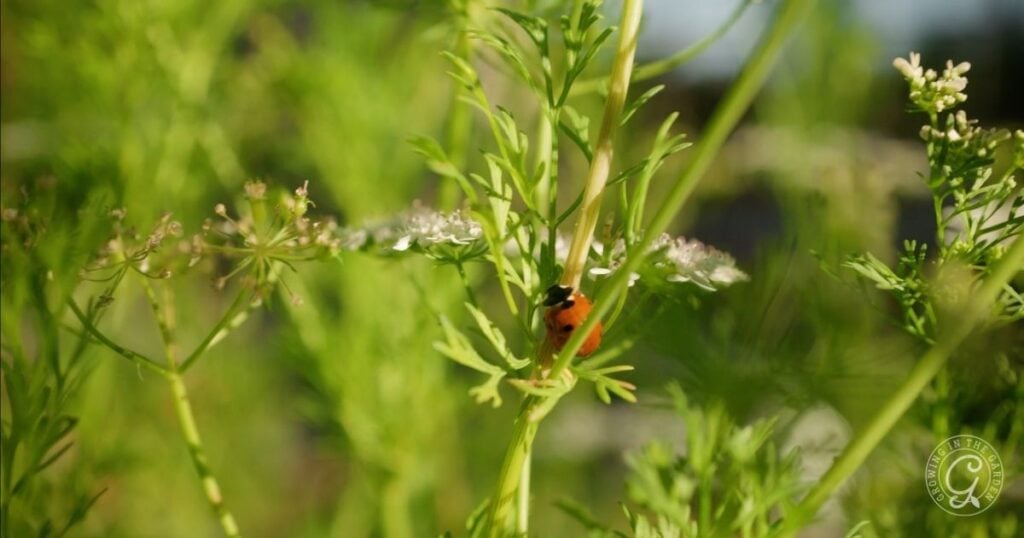
That said, I like to leave a few cool-season herbs like cilantro, dill, and parsley to flower. Their blooms are a magnet for beneficial insects and pollinators, and they play a crucial role in supporting garden biodiversity as we head into summer.
6. Plant and make plans for summer planting
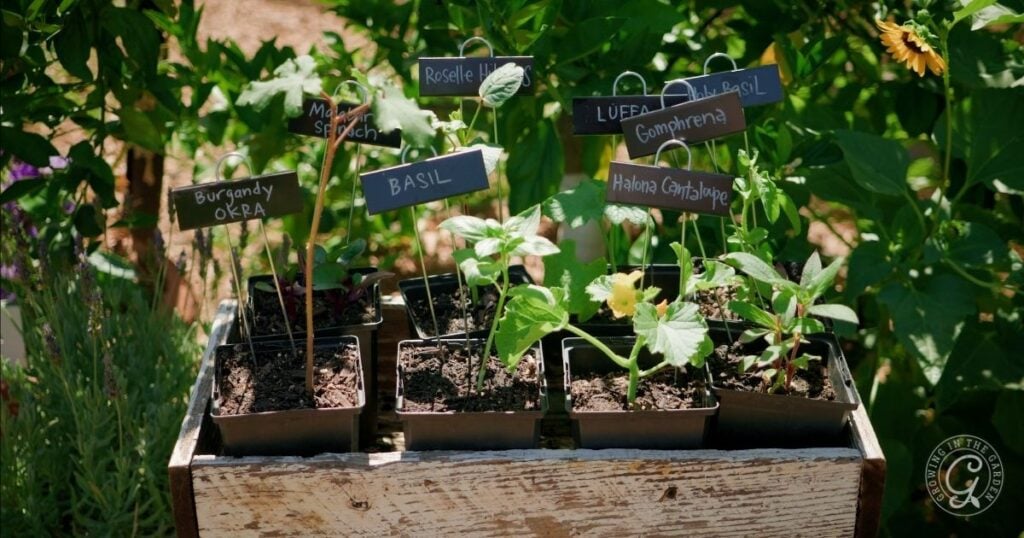
Take advantage of open spaces in your garden by planting heat-loving, warm-season crops like okra, sweet potatoes, black-eyed peas, and basil. These crops thrive during the hottest months and help you make the most of the summer growing season.
As you harvest spring crops like potatoes, garlic, and onions, have a plan ready for what will go in next. Thinking a few weeks ahead helps you transition smoothly from one season to the next without letting your garden sit empty.
Not sure what to plant? Use the May, June, July, and August planting guides for ideas and timing tips.
To order the “Perpetual Planting and Harvest Calendar for the Low Desert of Arizona“, click here.
7. Add cover crops to empty beds
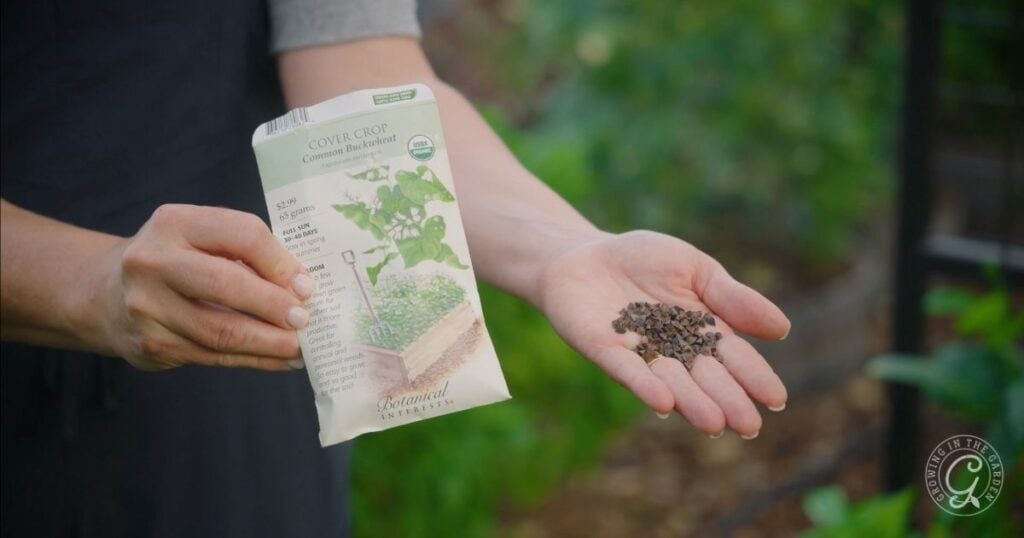
f garden beds won’t be used for six weeks or more, planting a cover crop is one of the best things you can do. Cover crops act like a living mulch. They shade the soil, reduce evaporation, suppress weeds, and add organic matter when you cut them back.
In the summer, it’s especially important to choose heat-loving cover crops that can handle high temperatures. Options like cowpeas, buckwheat, or Sudan grass not only survive the heat but also help your soil thrive through it.
Instead of letting beds sit empty and exposed, cover crops give them a chance to rest and rebuild. You’ll return in the fall to healthier soil that’s ready to plant.
Learn more in this guide: Take the Summer Off: Plant Heat-Tolerant Cover Crops Instead.
8. Evaluate your yard for needed shade

Once you have your plan of what to plant in your garden, assess the shade needs of your garden. First, look at the areas that receive full sun. Do you need to add some shade? Some plants grow well in full sun, while others do not. Next, evaluate where it would be helpful to add shade in your hot-climate summer garden.
For more information about shade, read this blog post, “How to Create Shade in the Garden”.
9. Add shade as needed to your hot-climate summer garden
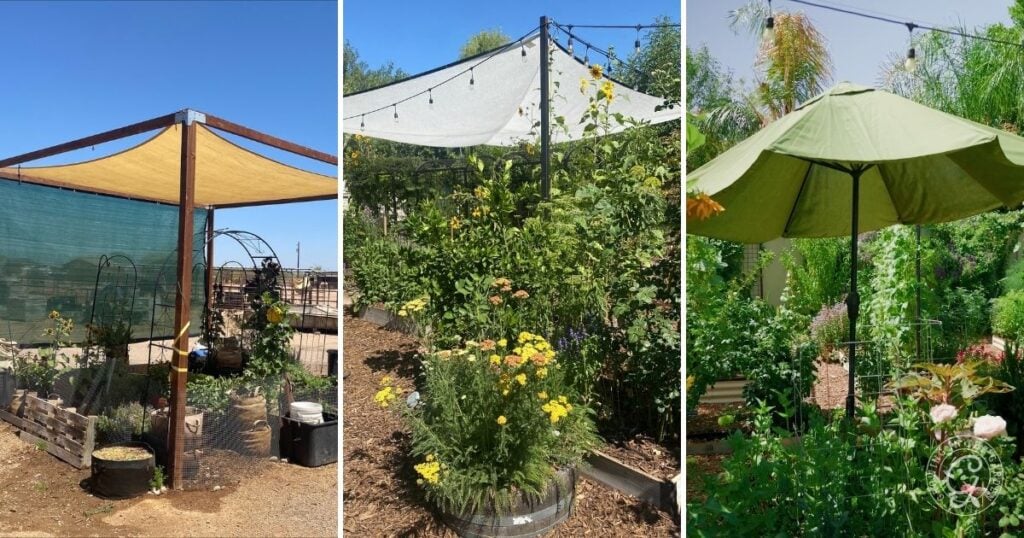
Shade keeps the direct sun off foliage; the shaded area can be about 10℉ cooler than areas without shade. In addition, providing shade for plants can lower the amount of moisture loss through transpiration (evaporation of water from plant leaves). There are several different ways to add shade to your garden.
Wondering if your garden really needs shade? In Why Add Shade to Your Garden in Summer, I share how shade protects plants, conserves water, and extends your growing season.
Sunflowers are an excellent way to add natural shade where needed.
- Grow sunflowers outside of your raised beds, so they do not compete with the crops in the beds.
- Plant sunflowers on the west side of the garden to help provide afternoon shade.
- Plant branching varieties of sunflowers for the longest-lasting blooms and shade.
Add shade cloth where needed. Shade cloth comes in different coverages. In most instances, a percentage of 40-60% shade cloth is suitable for vegetables during the summer.
Not sure how much sun your veggies need? Check out this guide on Which Vegetables Need Shade (and Which Thrive in Full Sun) to help your garden thrive.
10. Expect and learn from challenges in your hot-climate summer garden
Summer gardening in hot-summer climates isn’t easy. Each summer brings different challenges.
- Will there be monsoon winds, moisture, and rain?
- Will there be record-breaking hot temperatures again this year?
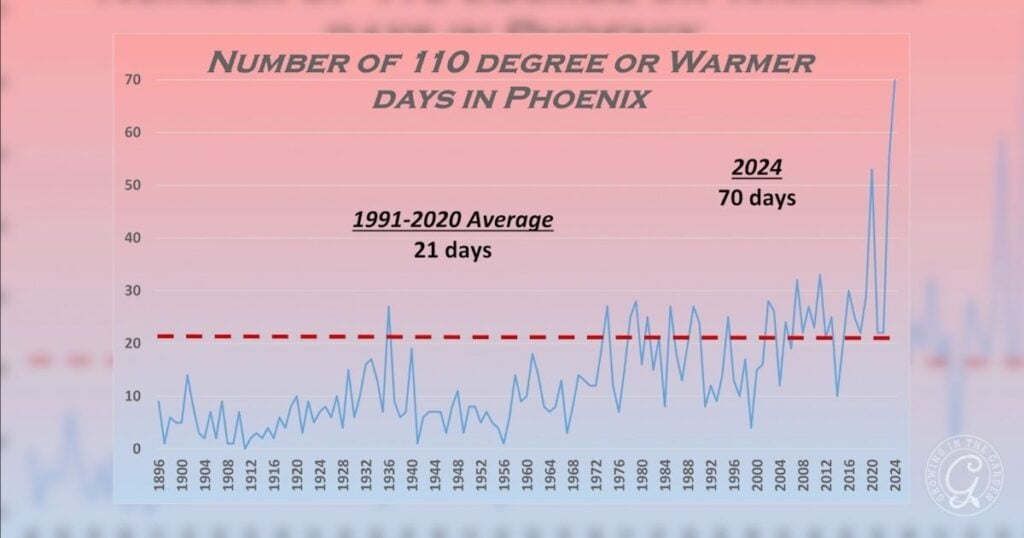
Preparing for summer may mean expecting that some plants will not survive. However, learning from our mistakes and circumstances outside our control is essential.
More Summer Gardening Resources
Looking for more ways to help your garden thrive during the summer? These posts and videos are packed with ideas, plant suggestions, and practical tips for gardening in the heat:
- Vegetables That Love Hot Summers (and How to Grow Them)
- 10 Flowers That Love Hot Summers (and How to Grow Them)
- Summer Gardening in Arizona
- Hot Summer Rose Care: How to Help Roses Survive Extreme Heat
- How to Keep Chickens Cool in Hot Summers
- Gardening in Extreme Heat: What to Do During a Heatwave
- 10 Ways to Help Your Garden Survive Summer
- Watch: Summer Gardening Playlist on YouTube





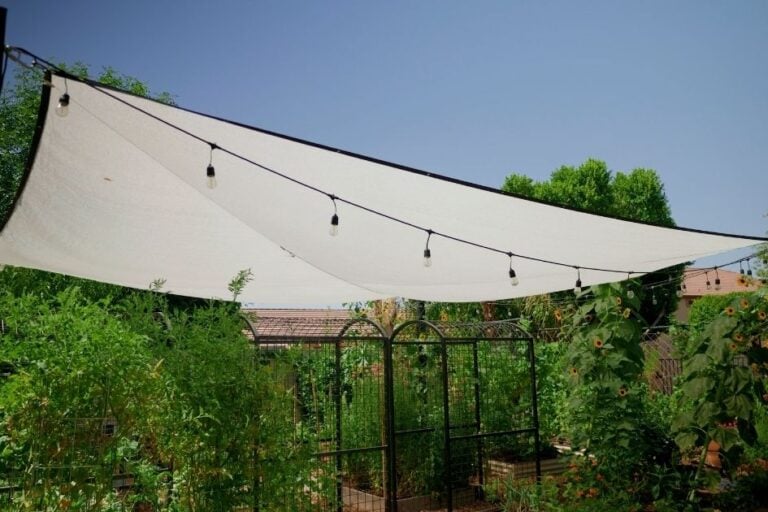


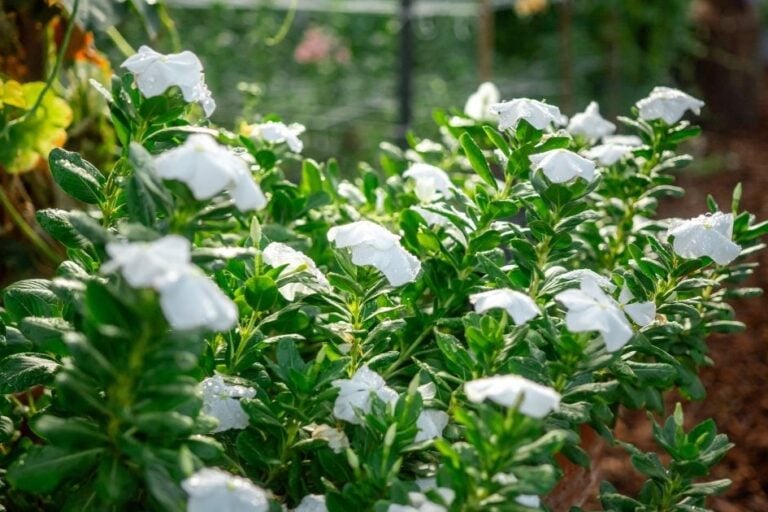
Leave a comment on How to Prepare Your Garden for a Hot Summer: 10 Essential Tips